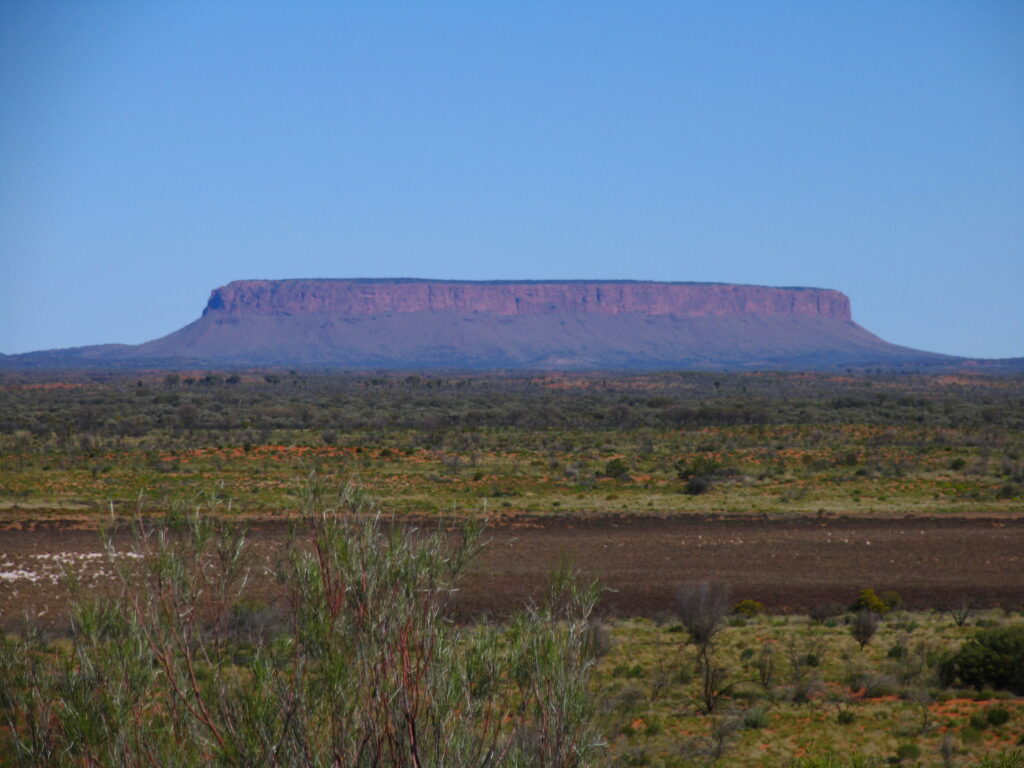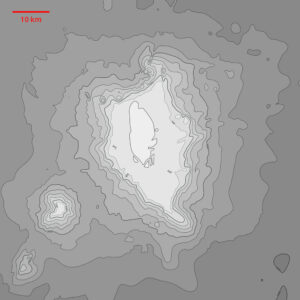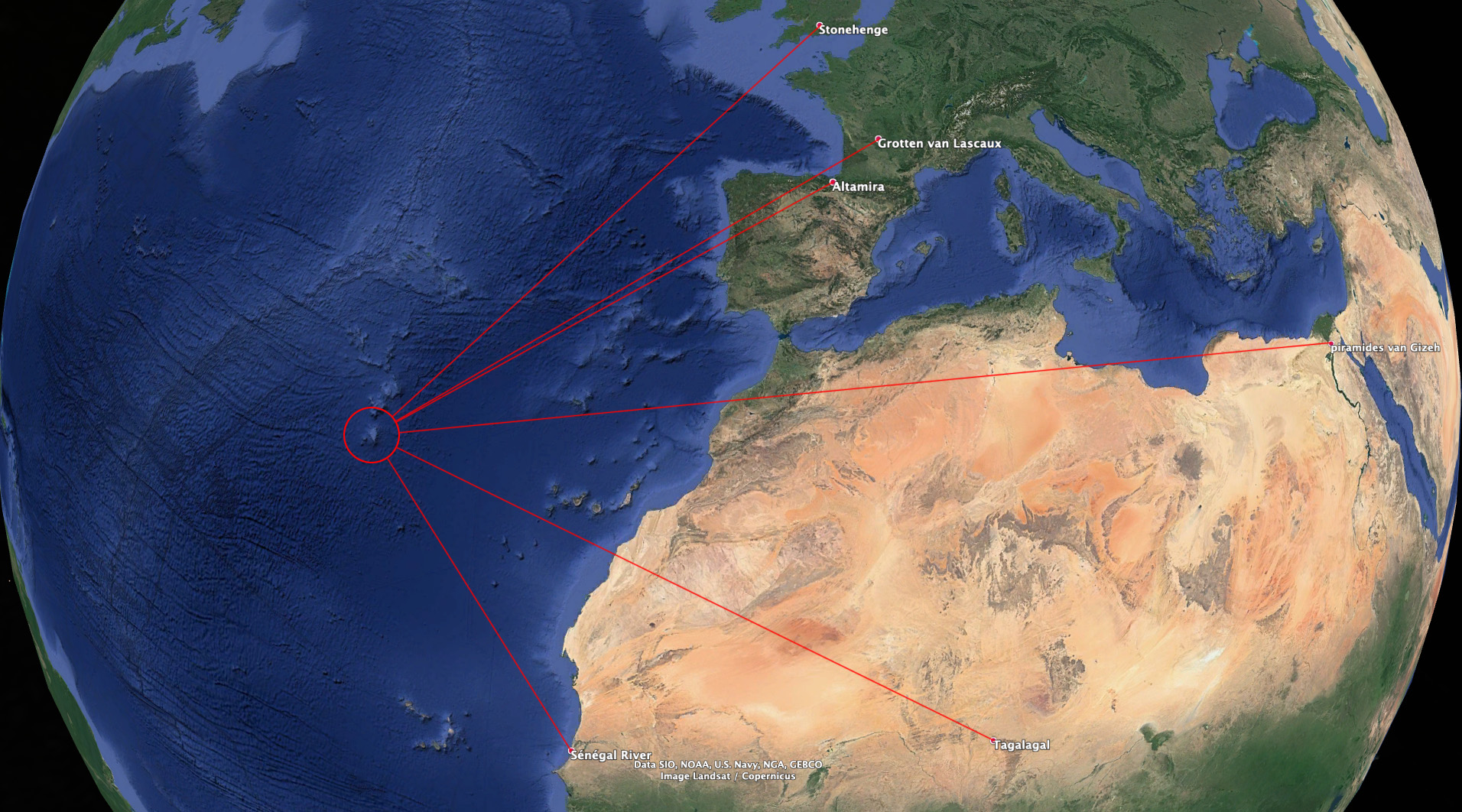Island of the Egg
Natuurlijke benaming van The Great Meteor Seamount of Island of the Egg is de naam Eiland van het Ei. De vorm is karakteristiek. In een latere fase van mijn onderzoek ontdekte ik de natuurlijke vorm van het eiland, die inderdaad overeenkomt met een Ei. Zie afbeelding landkaart.
De Egyptenaren noemden het Eiland van het Ei, Island of Creation and Seat of the First Occasion. Millennia later kreeg dit district aan de delta tussen Memphis/Letopolis/Heliopolis in Egypte ter herinnering de naam The First Province of the Falcon. De naam van de eilandengroep Azoren is afkomstig van de bewoning van haviken, die bij de ontdekking door de Portugezen in enorme aantallen bewoond werd door haviken (Açores). Dergelijke karakteristieken bepaalden in het verleden de naam van een eiland, landmassa e.d. De Canarische eilanden verkregen hun naam door de Hond (Canes = Latijn voor hond ) die daar werd aangetroffen. (Slechtvalk lijkt op een Havik)
De top van de Great Meteor is min of meer vlak met in het midden een verhoging, het is plateau-vormig.
De bovenkant van het plateau ligt op 275-330 meter onder de zeespiegel, de afmeting is ca. 74 x 32/35 kilometer breedte = ca. 2368/2590 km2. In het midden bevindt zich een verhoging, hoogte ca. 55 m. De berg heeft een totale hoogte van ca. 4500 m. en bestaat uit een vulkanische kern, die afgedekt is met 150-600 meter dik Post Midden-Mioceen carbonaat en pyroclastische rotsen, bedekt met bioclastisch zand (fossiele organismen).
Fig. 8 van het Kleurkatern toont een schematische vorm van dat eiland. Een latere zoektocht bracht het Eiland van Osiris gedetailleerd in beeld, zie fig.15.
Deze afbeelding geeft het ‘Eiland van de vorige wereld’ weer. Met de infrastructuur en de bouw van de Planisfeer (Planispherium van Ptolemaeus) tussen Athribis en (Memphis) Dahshur beelden de Egyptenaren de Her-stichting van hun vroegere Thuisland op de hoogvlakte van Gizeh uit, de wedergeboorte van de Osiris-religie. Aan de punt van de Delta herbouwden zij het ‘Eiland van Osiris’, het ‘Eiland van de vorige wereld’.
Colonisation and speciation on seamounts, evidence from Draconematidae (Nematoda) of the Great Meteor Seamount
The coarse calcareous sediments covering the plateau of the Great Meteor Seamount harbour 15 species of Draconematidae. Representatives of three genera are reported for the first time from the Atlantic region. The majority of Draconematidae from the plateau belong to four interstitial Dracograllus species. Three new species of the genus Prochaetosoma seem to form an endemic group on the plateau. Together with different morphotypes of a Dracograllus species, these species indicate an isolation of the Great Meteor Seamount. Possible areas are identified from which Draconematidae may have colonised the Great Meteor Seamount, among others shallow water habitats of the North Atlantic and Mediterranean Sea, or surrounding deep—sea habitats, especially reefs of cold—water corals of the North Atlantic. This study shows that Draconematidae have a much wider distribution than assumed before occurring also in many oceanic habitats, inclusively seamounts, than in subtidal or sublittoral ones where they have mainly been collected so far.
Fig. 1 a Regional map of the Great Meteor Seamount showing the stations at which EBS and GKG samples containing Draconematidae were taken during cruise M42/3 of RV Meteor in 1998 (modified after Pfannkuche et al. 2000). b Map to demonstrate the hypotheses for the colonisation of the plateau of the Great Meteor Seamount by Draconematidae (GMS Great Meteor Seamount, Az Azores, CI Canary Islands): a shallow water habitats of the North Atlantic are a pool of colonisation from which surface-dwelling species of ecological unit I may come (Draconema, Paradraconema-, and Prochaetosoma species); b in the case of the interstitial species of ecological unit III
Colonisation and speciation on seamounts
https://www.zitman.org/wp-content/uploads/EotE.jpg
von Rad, Ulrich (1974): Composition of bioclastic sands, carbonates and pyroclastic rocks of the Great Meteor and Josephine Seamounts, eastern North Atlantic. PANGAEA, https://doi.org/10.1594/PANGAEA.548422,
Supplement to: von Rad, U (1974): Great Meteor and Josephine Seamounts (eastern North Atlantic): Composition and origin of bioclastic sands, carbonate and pyroclastic rocks. Meteor Forschungsergebnisse, Deutsche Forschungsgemeinschaft, Reihe C Geologie und Geophysik, Gebrüder Bornträger, Berlin, Stuttgart, C19, 1-61
https://doi.pangaea.de/10.1594/PANGAEA.548422
Bioclast
Bioclasts are skeletal fossil fragments of once living marine or land organisms that are found in sedimentary rocks laid down in a marine environment—especially limestone varieties around the globe. some of which take on distinct textures and coloration from their predominate bioclasts—that geologists, archaeologists and paleontologists use to date a rock strata to a particular geological era.
Bioclast op Wikipedia
Mount Connor
Mount Conner, ook bekend als Attila en Artilla, en soms Mount Connor, is een berg van het type inselberg in de Australische deelstaat Noordelijk Territorium. De berg ligt in de zuidwesthoek van deze deelstaat op 75 kilometer ten zuidoosten van Lake Amadeus. Hij heeft een hoogte van 859 boven zeeniveau en steekt met 300 meter uit boven het omliggende terrein.

Mount Conner op Wikipedia

